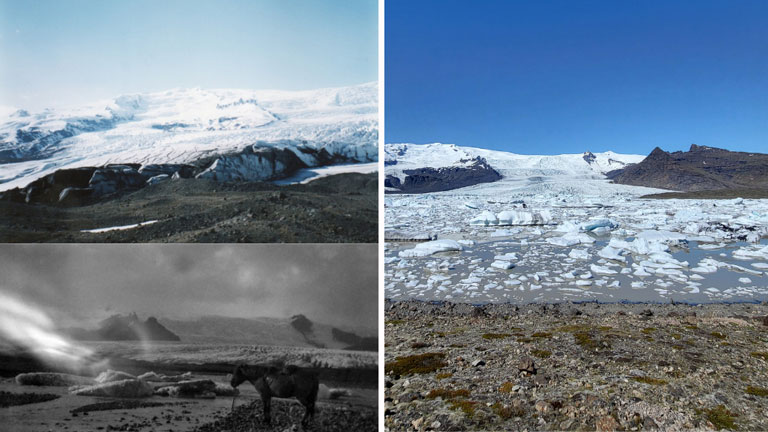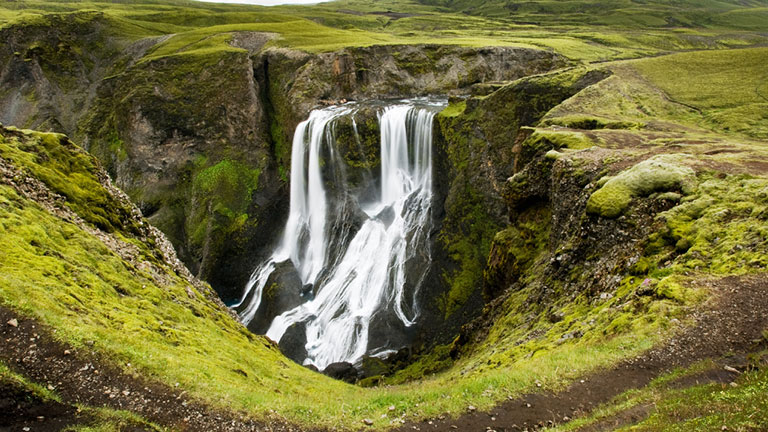Fjallsarlon
Glacier retreat is impacting every glacier in Iceland; some are affected to a greater extent than others. This means that the amount of ice is decreasing; in the process, this alters landscapes both in the immediate vicinity and further afield. In this article we’ll take a look at why this is happening and what changes are likely to occur in the future to places such as Fjallsárlón.
Vatnajökull National Park covers a region that’s a little under 14% of the area of Iceland as a whole. Aside from Greenland, no other European country has a national park of this size. This protected reserve encompasses a diverse range of environments including, of course, the vast icy expanse of Vatnajökull glacier.
Everyone likes to be fully prepared for a holiday in a new country. If this is your first winter adventure in Iceland, save yourself the trouble of scrolling through endless social media posts looking at packing lists and read this instead. Here are some of the items you might not have thought of and why you won’t regret bringing them.
If you’ve come to Iceland because of its breathtaking scenery, then it goes against the grain to tuck yourself away indoors, right? Choosing to camp means you can enjoy the outdoors for much longer and if the weather’s agreeable, have breakfast outside. In this article, we’ll take a look at the campsites that are nearest to Fjallsárlón and also explore what you can expect if you want to upgrade your experience in one of our floating glamping huts.
Icebergs are a big part of what attracts visitors to Fjallsárlón. These floating chunks of ice take on various sizes, shapes and forms. Close up, on one of our boat trips, you’ll see that they’re not uniform in colour either; some are a translucent shade of turquoise, while others are streaked with black ash. But have you ever wondered where they came from and how they got there? In this piece we’ll take a look at the life cycle of an iceberg in Fjallsárlón and find out.
If you’re prepared to drive along Iceland’s magnificent south coast as far as Fjallsárlón – and why wouldn’t you? – you’ll want to make the most of your time once you get there. The good news is that Fjallsárlón is far more than just a lagoon, with a number of activities that you can enjoy. Let’s share with you our suggestions for a complete day plan from sunrise to sunset. We’ll assume for the purposes of this article that your visit will be in summer, but you can make this work in spring or autumn as well because there’ll be ample daylight.
The south east of Iceland might be a sparsely populated part of the country, but its extraordinary landscapes mean that only a fool would rush through it. If you can spare a couple of days in the region, then we’d like to share an itinerary with you for a weekend escape in Southeast Iceland. Of course we’re excited to welcome you to Fjallsárlón, but there’s plenty more to keep you busy in the area.
On a fine day, there’s surely nothing better than the view from atop one of Iceland’s glaciers. Blessed with clear visibility and blue skies, you can see for miles and drink in the country’s incredible landscapes. But in Iceland, weather conditions can change rapidly. This unpredictability is what makes it so special when the clouds lift or the rain eases. Yet it also has implications for anyone who plans to hike here, even in summer. In this piece, we’ll take a look at what you need to know to make sure you stay safe if you’re hiking around glaciers in Iceland.
If you’ve been researching a visit to one of Iceland’s famously breathtaking glacier lagoons, then chances are you’ve whittled it down to a couple: Fjallsárlón and Jökulsárlón. These two standout lakes are among the most extraordinary sights on the country’s south coast and a trip to at least one of them is a must for any tourist who makes it this far east. But the two lagoons have very different characteristics. In this article, we’ll explore why Fjallsárlón stays quieter than Jökulsárlón and why that matters.
Who doesn’t dream of finding a tucked-away spot in Iceland that is relatively undiscovered? You can be forgiven for thinking that, especially along the country’s busy south coast, it’s almost impossible to find such a place. Yet with a bit of effort, an intrepid attitude and a sense of adventure, hidden gems do still exist. In this article, we’ve rounded up a few of our favourites close to Fjallsárlón, which you can schedule before or after your visit.
Who doesn’t dream of finding a tucked-away spot in Iceland that is relatively undiscovered? You can be forgiven for thinking that, especially along the country’s busy south coast, it’s almost impossible to find such a place. Yet with a bit of effort, an intrepid attitude and a sense of adventure, hidden gems do still exist. In this article, we’ve rounded up a few of our favourites close to Fjallsárlón, which you can schedule before or after your visit.
Who doesn’t dream of finding a tucked-away spot in Iceland that is relatively undiscovered? You can be forgiven for thinking that, especially along the country’s busy south coast, it’s almost impossible to find such a place. Yet with a bit of effort, an intrepid attitude and a sense of adventure, hidden gems do still exist. In this article, we’ve rounded up a few of our favourites close to Fjallsárlón, which you can schedule before or after your visit.













